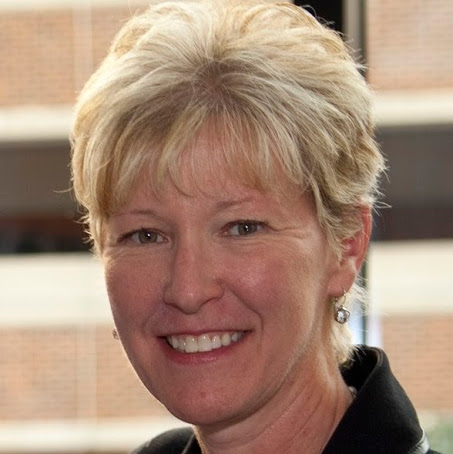19
2013Ten Questions to Ask a Director of Development Candidate
A posting by Dania Toscano Miwa and James V. Toscano We read in the recent report, UnderDeveloped, of significant problems in recruiting and retaining good development people and that average tenure now is often at two years or less. Moreover, all is not well in many relationships between Executive Directors (ED) and Development Directors (DD). In an effort to promote transparency and clear up what is thought of as the “profound misunderstanding” about roles between and among the Board, ED and DD in an institution’s development program, we submit the following initial questions to recruitment and screening committees of nonprofits interviewing…
26
2013
Guest Post – Functionality Plus Fit Equals Better Fund Raising
A Post by Dawn M. Fish, M.A., CFRE Reading the recently released report, Underdeveloped: A National Study of Challenges Facing Nonprofit Fundraising by Jeanne Bell and Maria Cornelius, I reflected upon my 25 years as an executive, development director and gift officer raising funds in social service, health care and higher education institutions. The report contains no surprises, but did fail to address two major issues related to nonprofit fund-raising failures: the traits and skills necessary in an effective director of development (DOD) and the relationship between the executive director (ED) and the DOD. DOD traits and skills An effective…
21
201310 Questions A Development Director Candidate Should Ask Once Offered But Before Accepting the Position
A posting by Dania Toscano Miwa and James V. Toscano 1. How many different individuals have held this position in the last 5 years? If one, proceed to the next question. If 2, ask why each left. If 3 or more, run in the other direction. 2. How is the development goal determined? Has it been met in the last three years? If the goal is set by the difference between expected expenses and anticipated revenue, and if it hasn’t been met in 2 or 3 of the last three years, ask for a change in the way it is…
02
2013
A Recap – The Most Popular Posts in 2012
Happy New Year! In looking back over last year, Jim and I were interested to see what resonated with our readers the most and are eager to hear what topics our readers wished we’d written about. (The comment box below is a great place to let us know what you’d like to read more about, or if you’d prefer, send me an email at Dania(@)ToscanoAdvisors.com.) These are the top five most read posts of last year. 1. 5 Myths about Social Media for Nonprofit Organizations 2. Why Does a Nonprofit Board Need Young People? 3. The Ten “Must” Agreements Between…
16
2012Ten Predictions for the Nonprofit Sector in 2013
A post by James V. Toscano 1. As traditional sources of gifts and grants plateau, nonprofits will increasingly turn to new and alternative sources of revenue, including social entrepreneurship, cause marketing, and for-profit subsidiaries. Pay for performance, in many forms, will be an emerging methodology for payment by government and other funding groups. 2. The total number of nonprofits will increase year over year, as will the number of mergers and acquisitions among existing nonprofits. 3. Of those retiring Boomers from the business world and others who want to benefit society, some will choose to start B-corporations, which are double…
07
2012
How Many Board Members Does It Take to Change a Light Bulb?
A Posting from James V. Toscano How many times have we read, heard or said something like, “Board Members Must Not Only Give, They Must Get” or one of the variations of that message? I have read it, heard it, said it, taught it, written it a few thousand times in my fifty years in nonprofit management and consulting. And who listens? Apparently not a lot of board members In the latest BoardSource survey of nonprofit CEO’s on their boards’ performance (see the distribution in the map below), a consistent pattern emerges. Sampling both BoardSource members and nonmembers on a range…
07
2012Plus Ça Change
plus ça change A post by James V. Toscano Well, the long drawn out election process is over, with everything pretty much the same, albeit with early hints of a desire to get something done. President Obama returns for four more years, hopefully no more than one as a lame duck. Congress remains essentially the same, with the Democrats picking up one, possibly two, seats in the Senate while they have three more votes in their minority status in the House of Representative. Could we reverse the old saw and predict: “ Plus la même chose, plus ça change?” Pardon…
24
2012
The Revenue Crisis
A post by James V. Toscano The traditional nonprofit revenue model is broken. Revenue formulas are out of date. Contributions just don’t flow in the same way. Some revenue taps have dried up. Others, such as government, are fading. Traditional methods don’t work as well. It’s time to reimagined the nonprofit revenue paradigm. Attention and concern lately have focused on measuring results and impact. However, if we lack the resources to do the work, we get no results. Revenue always precedes results in priority. And if revenue sources demand results but do not pay to evaluate and obtain results, we…
10
2012Moving the Needle
A post by James V. Toscano In an article in Nonprofit Quarterly, “Strategic Philanthropy: Who Wins and Loses?” Prentice Zinn, using a variety of reasons, outlines the argument against funding sources alone deciding where to focus their grants as part of their version of a strategic initiative, often involving outcomes measurement and scaling up service. In a trenchant major point, he states: “Today, the field of philanthropy is seeing a relative explosion of conversations, debate, and reflection about how it can be more effective. Add to this rich exchange of information a dose of organizational narcissism, careerism, and peer pressure…
23
2012Donor Stewardship Mnemonics
A post by James V. Toscano mne·mon·ics: the process or technique of improving or developing the memory. The Four R’s: Retention = Reporting, Rewarding, Renewing Donor retention is one of the most important tasks in the development responsibilities of a nonprofit organization. After substantial effort in terms of time and resources, translating suspects into prospects and prospects into donors is one of the great accomplishments in fund-raising. Cultivation and solicitation of new donors are among the great skills of the fund-raising community. To retain and upgrade the donor becomes the significant ongoing task, and many organizations fail in this essential activity….
